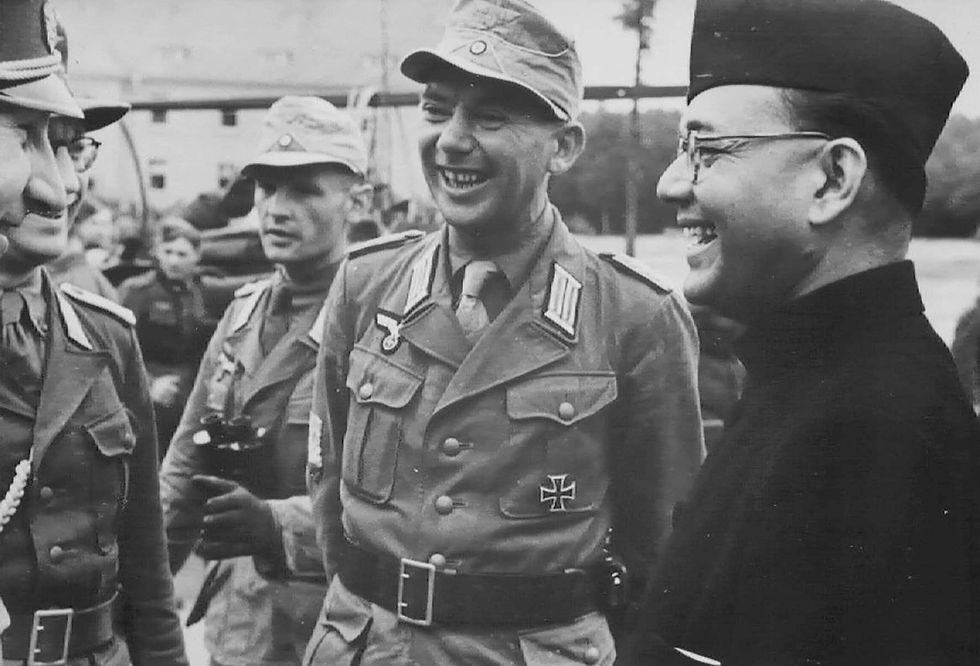Why we shouldn’t erase the anti-hero
- Aditi Pai

- Mar 23
- 3 min read
A history scrubbed of its ‘villains’ is a story half told.

The past is beautiful depending upon which way you look at it---reminiscing is romantic but digging up can be dangerous. For, it can throw up skeletons. The past has a touch of nostalgia and mystery; worn out black stones whisper stories of kings and queens, the peeling paint of the walls is witness to stately gatherings and the fading inscriptions evoke images of scholars recording the times. The past talks to us through sepia-tinted pages, as ever-changing oral legends and through broken stones and pillars. Not all stories are what fairytales are made of; we have violence, oppression and gore. The land has seen bloodshed along with bounty, poetry and poverty, kind kings and evil enemies. But they’ve come, lived and left their mark. Can we or should we erase those scars and memories of pain? Do we want to erase the villain?
The current villain in question is Aurangzeb, probably the last Mughal emperor who ruled with might. His tomb, rather non-descript, is suddenly at the centre of a storm. A tomb that dates back 300 years and was almost forgotten until a controversy reminded people of its existence. The ‘Tomb of Aurangzeb’ as its recorded with the Archaeological Survey of India, stands neglected in Khultabad. Tourists to Chhatrapati Sambhaji Nagar, throng to the Ajanta and Ellora caves, to the Mughal-era Bibi Ka Maqbara and to the Daulatabad Fort but rarely stop by here. The reasons are rooted in our historical records—the Mughal emperor buried there, inflicted pain, taxes, atrocities and violence on the natives of the land. The architecture isn’t of significance or beauty either. The place is best left ignored, allowed to rest as a relic of the past, as a reminder of the end of the era that saw magnificent architectural monuments, bloody wars of expansion and conquest and a period that left its imprint on the land’s social and economic fabric. By popularly read historical accounts, Aurangazeb was evil. And now, after three centuries, there’s an uproar demanding the erasure of any sign of him.
Can we wipe villains out of public memory? Villains also play their part in society. Without a villain, the hero cannot really shine. Every story needs a villain who create conflict, challenges and becomes the motivation for the good person to emerge as the ‘hero’. The worst brings out the best. The antagonistic provokes the protagonist. After all, we’ve always been told about a ‘trial by fire’, haven’t we? Any writer of fiction or crime thrillers will tell you that the villain adds spice to a story. Be it in our epics, in Shakespearean dramas, in fables, a villain symbolises all that is unpleasant and unwanted. If there were to be no bad, how would we even know what’s right?
To erase the villain is to erase struggle. Imagine deleting Genghis Khan from Mongol history—what would be left of the legend of their resilience? Or wiping away Stalin from Soviet memory—who then would embody the perils of unchecked power? Negatives have the potential to throw light on various aspects—on justice, ethical and moral considerations, on accountability and on choosing the right path. Just like the sane advice of ‘keep the enemy close to you’, we must observe the antagonist and learn. The villain is the one who turns us, regular well-meaning and hard-working people, into everyday heroes. The horrors of the past serve as warnings. They remind us of what happens when tyranny goes unchallenged, when ambition turns ruthless, and when power disregards the governed. Aurangzeb’s name may evoke pain, but it also carries lessons—about resistance, about endurance, and about the cost of imperial arrogance. Consider the fate of Napoleon, once seen as both a liberator and a dictator. His name is synonymous with military genius, yet his ambition led France into ruin. And yet, can we erase him? Without Napoleon, the modern European order—its laws, its borders, its rivalries—would be incomprehensible. Villains should be penalised and punished and made an example of. But to erase them is to do disservice to society and to future generations. For, you can never truly understand the powers of the hero until the villain presents challenges!





Comments